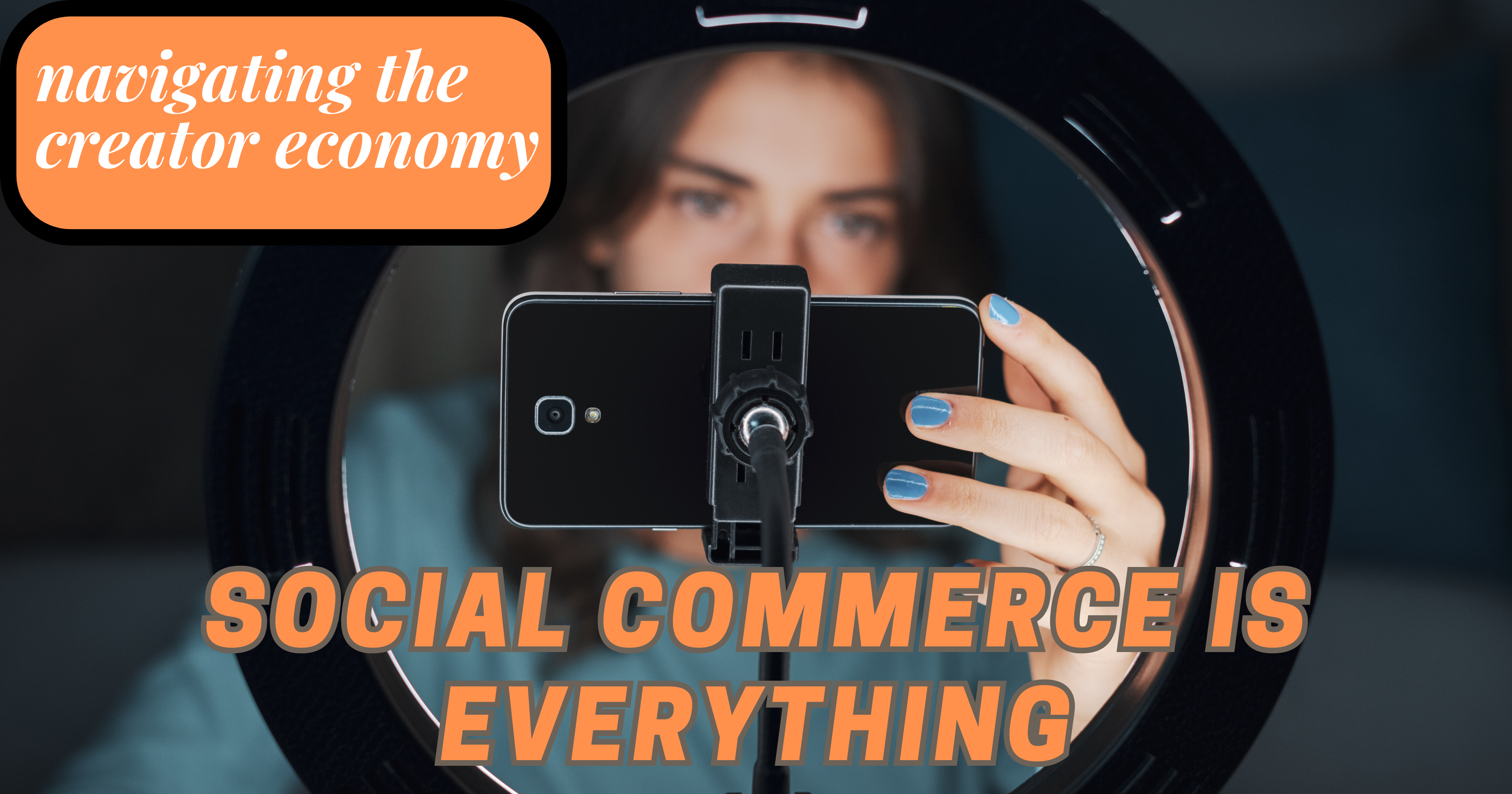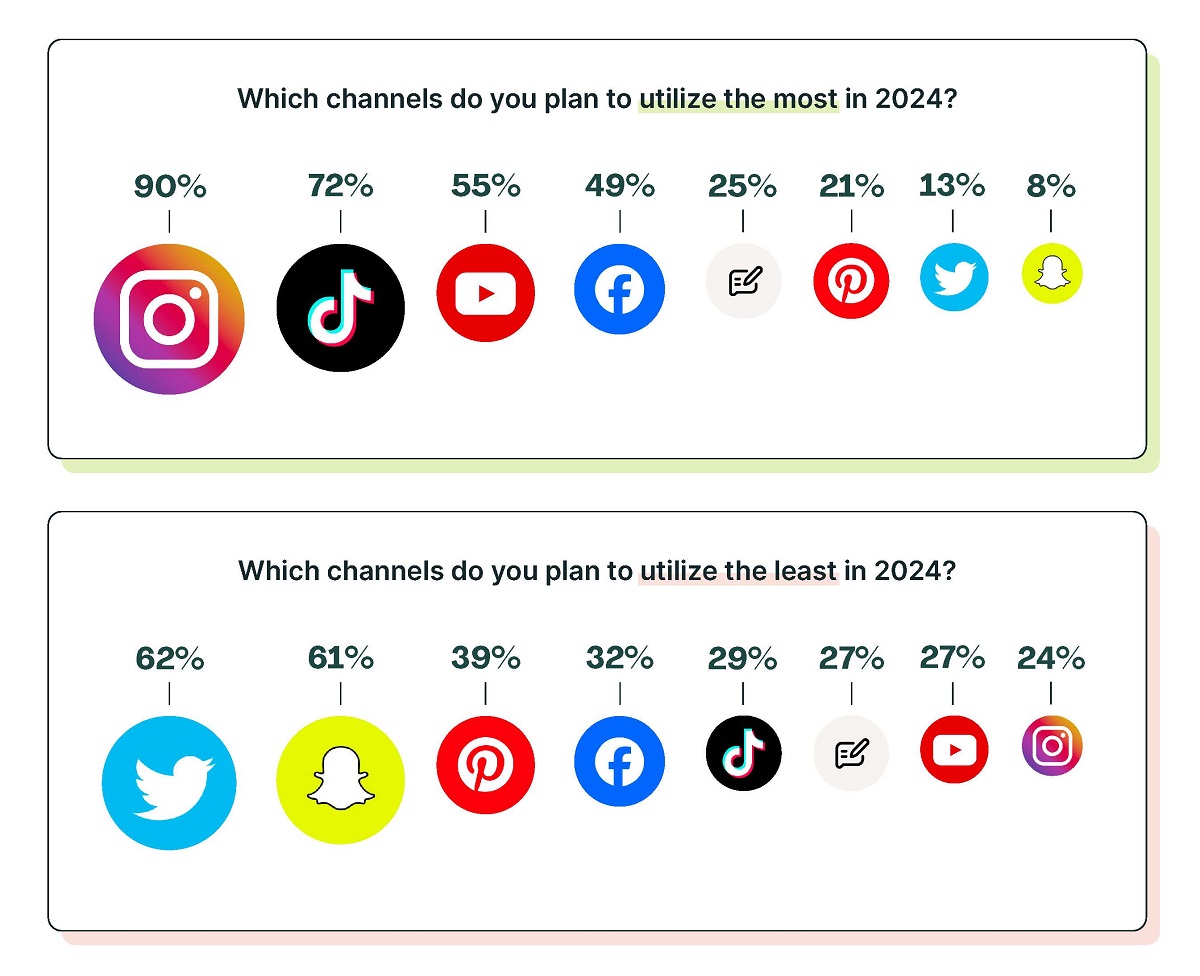
TL;DR
- Transforming social media platforms from mere engagement spaces to dynamic marketplaces, social commerce stands out as one of the most significant trends for marketers to watch out for in 2024.
- With digital video consumption at an all-time high, advertisers are increasingly investing in creator-led content, recognizing its power to drive consumer behavior and sales.
- Influencers are pivotal in connecting brands with consumers, utilizing authentic content to drive both online engagement and in-store traffic.
- Marketing strategy agency Aspire’s new report, “The State of Influencer Marketing 2024,” casts a spotlight on the formidable influence of social commerce.
- Magda Houalla, Aspire’s director of marketing strategy, predicts that word-of-mouth marketing on social media will be the primary way that brands obtain new customers over the next few years.
Social commerce stands out as one of the most significant trends for marketers to watch out for in 2024. Social media platforms are evolving beyond their traditional roles as spaces for engagement and community building, morphing into dynamic marketplaces where discovery and purchase happen seamlessly.
Led by creator content, digital video consumption has reached an all-time high, and advertisers are taking notice. Currently valued at $250 billion, Goldman Sachs forecasts that the burgeoning creator economy is expected to grow to a whopping $480 billion by 2027. This year alone, according to a new report by IAB and TalkShoppe, 44% of marketers plan to increase their investment in creator-led content by an average of 25%. And as the creator economy continues to expand, agencies and other experts are chiming in with winning strategies for brands to harness the power of influencer marketing.
READ MORE: The creator economy could approach half-a-trillion dollars by 2027 (Goldman Sachs)
READ MORE: The (Many) Business Models That Make Up the Creator Economy (NAB Amplify)
The rise of social commerce is a fundamental evolution in how consumers interact with brands online. It underscores the growing importance of authentic, influencer-driven content in guiding consumer decisions, making social commerce a critical area of focus for brands aiming to capitalize on the creator economy’s explosive growth.
The Impact of Social Commerce
The trajectory of social commerce in the United States is on a remarkable ascent, with revenue projected to leap from $67 billion in 2023 to over $144 billion by 2027, according to Insider Intelligence. This significant growth underscores the shifting dynamics of consumer shopping behaviors, increasingly influenced by the digital landscape and the persuasive power of social media platforms.
READ MORE: Social Commerce Forecast 2023 (Insider Intelligence)
Central to this transformation is the role of creator-led content, which has proven especially impactful among Gen Z consumers. Data from Morning Consult reveals a compelling trend: 53% of Gen Z shoppers report making a purchase after watching a product review video on social media. Furthermore, the influence of specific content formats like “product hauls” and “Get Ready with Me” videos is undeniable, driving 40% and 37% of these consumers, respectively, to make purchases.
READ MORE: Report: What to Know About Gen Z’s Engagement with Social Media, Entertainment and Technology (Morning Consult)
The rise of social commerce represents a paradigm shift in the retail ecosystem, blurring the lines between social networking and e-commerce. As consumers increasingly look to trusted influencers for product recommendations and insights, the impact of social media on purchasing decisions becomes more pronounced. This trend not only reflects the growing importance of social commerce in the broader creator economy but also emphasizes the need for brands to leverage these platforms and partnerships strategically to engage with and captivate the next generation of consumers.
Strategic Insights on Social Commerce
Aspire’s sixth annual report, “The State of Influencer Marketing 2024,” recently unveiled by the marketing strategy agency, casts a spotlight on the formidable influence of social commerce.
Instagram continues to reign as the most popular channel for influencer marketing among brands, the report found, followed by TikTok. “This year, we saw a record number of brands run TikTok campaigns on Aspire, with a 26% increase in the number of TikTok campaigns year-over-year. This will continue to be the trend in 2024, with brands saying they’ll invest more into Instagram and TikTok this coming year.”

Magda Houalla, Aspire’s director of marketing strategy, encapsulates this trend, predicting, “Word of mouth marketing on social media will be the primary way that brands obtain new customers over the next few years.”
During a webinar touting the report, Houalla pointed to the recent hype surrounding the Stanley tumbler as a prime example of the type of results social commerce can inspire.
“We’ve seen a lot of creators talk about Stanley, and I think that they do an exceptionally good job at is fostering community and kind of creating this urgency to buy product,” she notes. Of particular interest, she says, is how influencers on TikTok and elsewhere were actually driving in-store traffic as Stanley cups were quickly stripped from store shelves.
Houalla also identifies what she calls the “Queen Bee strategy.”
“This is where you have one macro creator post a hero piece of content … and then a bunch of micro creators that are redirecting towards that hero piece of content, kind of like a beehive,” she explains. In addition to Stanley, other brands using this social commerce strategy include makeup brand Ilya, and Samsung, which uses influencers to peddle high-end smart TVs.
“What I really like about Samsung is the quiet elegance, if you will, of the influencer programs that they’re doing, or the influencer work they’re doing specifically with brands in the home decor space,” she adds. “It is really subtle the way they talk about these brands because it is part of a broader ‘look at my living room makeover’ type content versus a shop.”
READ MORE: The State of Influencer Marketing 2024 (Aspire)
Influencers Play a Crucial Role in Social Commerce
Beyond driving sales, influencers play a crucial role in fostering community around brands. They create spaces where followers can discuss, share, and engage with products, turning individual purchasing decisions into collective experiences. This sense of community not only strengthens brand loyalty but also amplifies the impact of marketing campaigns. The relationship between influencers and their audiences is built on trust and relatability, making their endorsements more effective than traditional advertising.
Social commerce is increasingly not just an add-on feature but a central component of many brands’ digital strategies, notes Jessica Deyo at Marketing Dive. “Starting first with creators when it comes to advertising is definitely the wave of the future,” Ali Fazal, VP of marketing for creator management platform Grin, tells Deyo.
Influencers are playing a pivotal role in this shift, acting as the bridge between brands and consumers in the social media space. Their ability to showcase products in a relatable, engaging manner is transforming the shopping experience from a transactional process into an interactive and social event.
READ MORE: Inside the creator marketing trends expected to go viral in 2024 (Marketing Dive)
“If you look at the heart of influence, you’d be foolish to ignore the underlying component of what makes influencer marketing so successful; a uniquely informed and authentic perspective that audiences can trust within a like-minded community,” powerhouse agency Ogilvy counsels in its latest report, “2024 Influence Trends You Should Know About.”
Livestreaming is one surefire strategy for creators to build authenticity and trust, Ogilvy advises. “Through livestreams, creators can demonstrate products authentically, dispelling fears of staged and deceptive marketing,” the report reads. “Consumers believe the authenticity, as they can probe their creators to use the product and answer questions right in front of their eyes. It’s the shopping center juicing demos of the 90s but behind the protective barrier of your phone screen.”
READ MORE: 2024 Influence Trends You Should Care About (Ogilvy)
Embracing the New Wave of Social Commerce
As we navigate the ever-evolving landscape of social commerce, it’s clear that this trend represents more than just a shift in consumer behavior — it’s a fundamental change in the way brands interact with their audiences. The rise of live-streaming and the strategic emphasis on creators for advertising underscore a new era in digital marketing, one where engagement, authenticity, and community take center stage.
The integration of social commerce into digital strategies marks a significant pivot for brands. It’s a move towards more genuine, influencer-driven marketing approaches that resonate deeply with today’s consumers. This shift not only enhances the consumer experience but also opens up new avenues for brands to forge meaningful connections and drive tangible results. As social commerce continues to grow and shape the digital marketplace, its impact on both online engagement and in-store traffic reaffirms the power of influencer-led content in the modern marketing mix.
CRUSHING IT IN THE CREATOR ECONOMY:
The cultural impact a creator has is already surpassing that of traditional media, but there’s still a stark imbalance of power between proprietary platforms and the creators who use them. Discover what it takes to stay ahead of the game with these fresh insights hand-picked from the NAB Amplify archives:
- How Creators (Professional and Otherwise) Are Making Money in the Creator Economy
- Almost 25% of Us Are Content Creators. Here’s Why That’s Awesome (and How It’s Actionable).
- Storytelling on Demand: It Has to Happen for the Creator Economy
- In the Creator Economy, Creator-Educators Contain Multitudes
- The Economy Part of the Creator Economy
- Why Community Is Everything for the Creator Economy


